On a cold morning in February, staff from our partner, Share and Care Nepal, and I hurried up the hill to meet a group of women. By the time we arrived, the members were already assembled, smiling warmly as they welcomed us. Each wore a pink saree - a traditional Nepalese garment they had chosen to symbolise unity.
After introductions, they proudly shared their journey: how Share and Care arrived in their remote village, inspiring them to come together and build the confidence to speak publicly about issues important to them. They spoke about raising awareness on girls’ trafficking, launching income-generating activities, and successfully lobbying the local government to allocate funds for their community.
The driving force behind these changes, they told me, was their Samuha, their Self-Help Group (SHG).
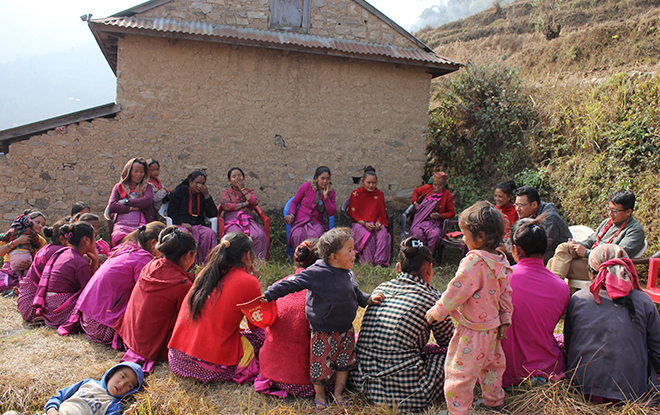
Women conducting their SHG meeting.
What is a Self-Help Group?
The Self-Help Group is a small, voluntary association of people, often women and disadvantaged groups, who come together to discuss and address their shared socio-economic concerns. The groups which typically comprise 15-25 members, meet regularly to:
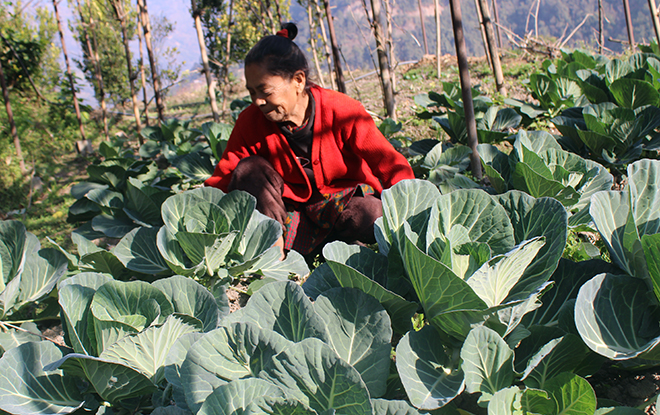
An SHG member cultivating vegetables after receiving training and support from her group.
While mutual aid and community support have existed for centuries, the modern SHG movement emerged in South Asia during the 1970s and 1980s as a tool for community development and women’s empowerment.
How do Self-Help Groups empower women and reduce household poverty?
Participation in SHGs enable women to engage in discussions on issues affecting their families and communities. At first, project teams help organise meetings, but leadership soon shifts to the members themselves, allowing them to develop confidence and independence.
Through these regular meetings, women strengthen social ties, learn to manage group savings, and provide small loans to start micro-enterprises. Supporting organisations such as Share and Care Nepal enhance this process by offering financial literacy, skills training, and sometimes seed funding to launch local businesses.
This approach not only increases household income but also boosts women’s confidence and influence within their families. Many who were once too shy to speak publicly now express their opinions freely, and husbands increasingly support their participation in meetings and community initiatives.
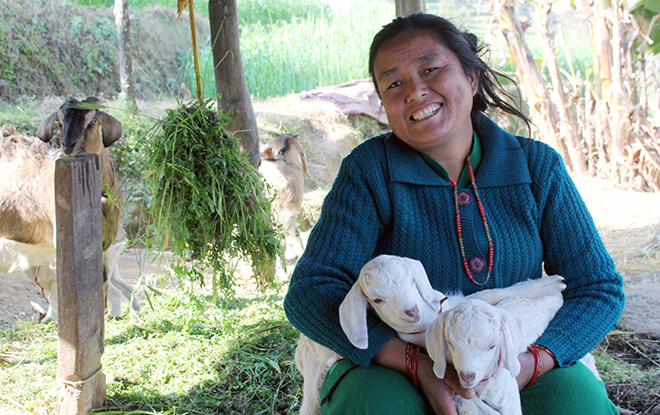
SHG members becoming entrepreneurs after receiving training and assistance through their SHG with the help of Share and Care Nepal and Tearfund.
The fruits of Self-Help Groups and Share and Care Nepal
In 1995, Share and Care adopted the SHG approach after learning from the successful “Jamkhed Model” in India, shifting its work from welfare-based aid to empowerment-focused development. Inspired by its success and effectiveness, Share and Care shifted its working approach from a welfare-based to empowerment-focused through SHG.
Share and Care facilitates the formation of SHGs within communities, raising awareness about the value of collective action and the benefits of working together. From the outset, Share and Care “begins with the end in mind,” helping communities envision their desired future. They clearly communicate their planned exit timeline so that groups develop interdependence among members and with other SHGs, rather than dependency on Share and Care.
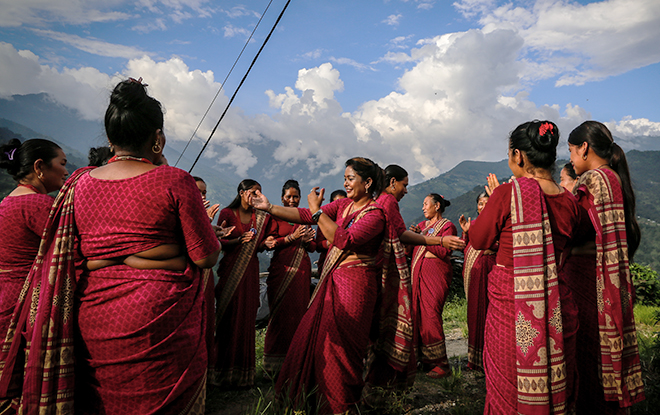
SHG members celebrating Teej, the festival of women
SHG members meet regularly to deposit their savings, provide loans to members in greatest need, and support one another during times of crisis. They also act collectively to address issues such as violence against women, offering solidarity and protection to affected members. And they do not miss having fun - whenever there is a festival or special public event, they dance together to a trendy Nepali folk song.
Economic empowerment is a key outcome. In the groups I visited, 25 women were engaged in goat rearing, five in vegetable farming, five in poultry farming, and three in buffalo rearing, each generating additional income. Other activities included mushroom farming, running kirana (convenience) shops, and operating home-stay businesses.
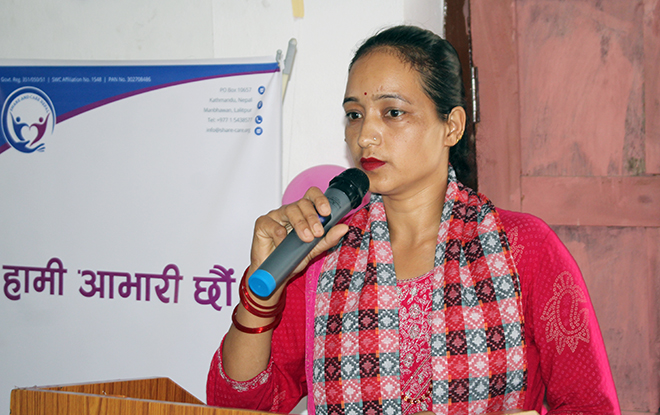
An SHG member speaks in a public forum-women who were once too shy even to say their names are now emerging as community leaders.
A recent report found that 210 vulnerable families are now involved in various income-generating initiatives, such as goat rearing, poultry farming, and vegetable cultivation, with some households earning as much as NPR (Nepalese Rupees) 100,000 annually.
SHGs have also mobilised approximately NPR 21 million from the government and other sources for community development projects. These funds have supported activities such as improving irrigation systems and building learning centres to providing start-up funds for women-led enterprises.
Before leaving the meeting, I asked what the group planned to do after Share and Care’s project concluded. Without hesitation, one woman responded, “We have our ‘samuha’ [SHG] and our network. We can continue meeting here. We know how to run meetings and manage our institution, and we know how to support one another and make our government accountable.”
And, in agreement all the other women clapped with a broad smile.